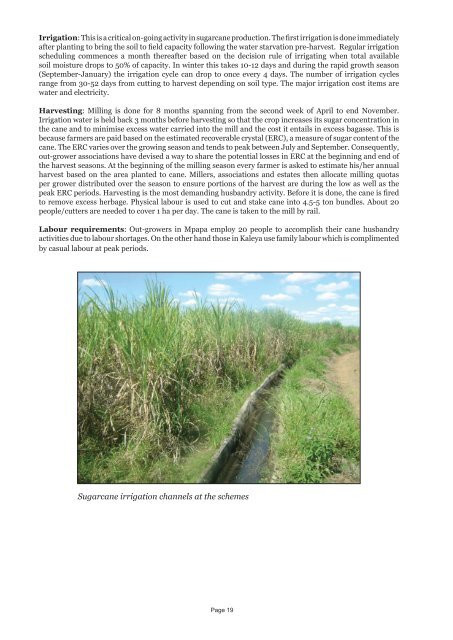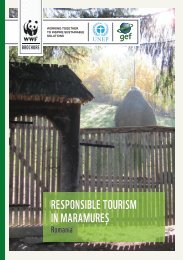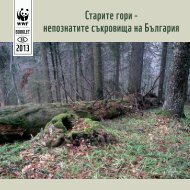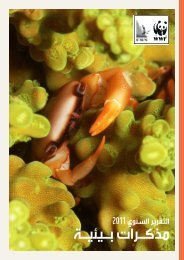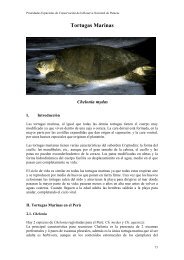Assessment of sugarcane outgrower schemes for
Assessment of sugarcane outgrower schemes for
Assessment of sugarcane outgrower schemes for
You also want an ePaper? Increase the reach of your titles
YUMPU automatically turns print PDFs into web optimized ePapers that Google loves.
Irrigation: This is a critical on-going activity in <strong>sugarcane</strong> production. The first irrigation is done immediately<br />
after planting to bring the soil to field capacity following the water starvation pre-harvest. Regular irrigation<br />
scheduling commences a month thereafter based on the decision rule <strong>of</strong> irrigating when total available<br />
soil moisture drops to 50% <strong>of</strong> capacity. In winter this takes 10-12 days and during the rapid growth season<br />
(September-January) the irrigation cycle can drop to once every 4 days. The number <strong>of</strong> irrigation cycles<br />
range from 30-52 days from cutting to harvest depending on soil type. The major irrigation cost items are<br />
water and electricity.<br />
Harvesting: Milling is done <strong>for</strong> 8 months spanning from the second week <strong>of</strong> April to end November.<br />
Irrigation water is held back 3 months be<strong>for</strong>e harvesting so that the crop increases its sugar concentration in<br />
the cane and to minimise excess water carried into the mill and the cost it entails in excess bagasse. This is<br />
because farmers are paid based on the estimated recoverable crystal (ERC), a measure <strong>of</strong> sugar content <strong>of</strong> the<br />
cane. The ERC varies over the growing season and tends to peak between July and September. Consequently,<br />
out-grower associations have devised a way to share the potential losses in ERC at the beginning and end <strong>of</strong><br />
the harvest seasons. At the beginning <strong>of</strong> the milling season every farmer is asked to estimate his/her annual<br />
harvest based on the area planted to cane. Millers, associations and estates then allocate milling quotas<br />
per grower distributed over the season to ensure portions <strong>of</strong> the harvest are during the low as well as the<br />
peak ERC periods. Harvesting is the most demanding husbandry activity. Be<strong>for</strong>e it is done, the cane is fired<br />
to remove excess herbage. Physical labour is used to cut and stake cane into 4.5-5 ton bundles. About 20<br />
people/cutters are needed to cover 1 ha per day. The cane is taken to the mill by rail.<br />
Labour requirements: Out-growers in Mpapa employ 20 people to accomplish their cane husbandry<br />
activities due to labour shortages. On the other hand those in Kaleya use family labour which is complimented<br />
by casual labour at peak periods.<br />
Sugarcane irrigation channels at the <strong>schemes</strong><br />
Page 19


